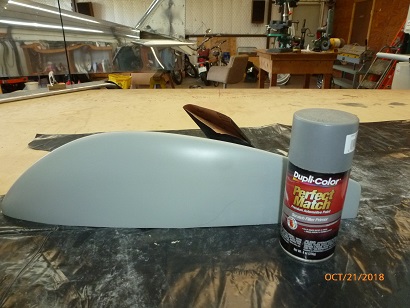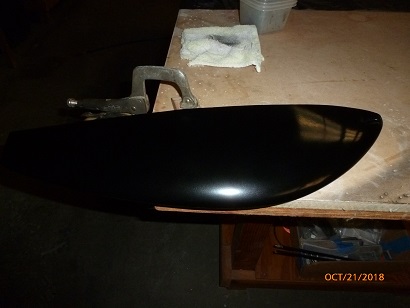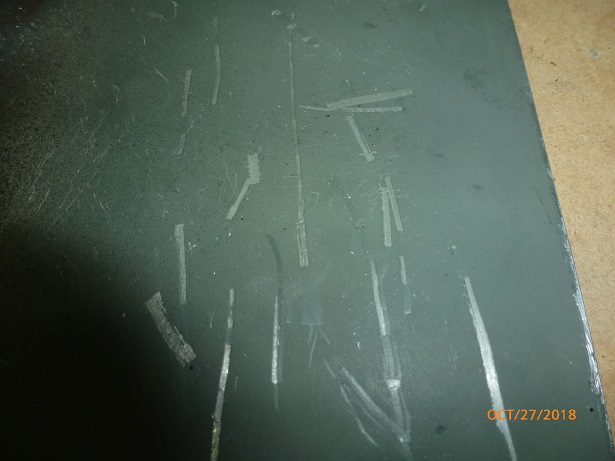Ok Guys,
Prodded on by
Art's success I decided to give Dupli-Color a shot. I bought the paint before
Art said that he used acrylic enamel. The paint I tried was called Dupli Color Perfect Match Premium Automotive Paint.
I started with a tail tip and added rivets to simulate what I would have to paint.

I sanded with 220 grit and filled the rivet countersinks with fairing filler. Then sanded again with 220 grit.


Applied three coats of Dupli-Color Scratch Filler Primer (10 min between coats per instructions).

After an hour I sanded the primer with 800 grit, wiped with a dry cloth followed by a tack <sp> cloth and applied 5 coats of top coat

I allowed the top coat to harden over night. This morning I compounded, polished, and waxed.
The surface was a bit softer than the two part paint I used. Seemed it would burn through easier if I were careless, but plenty hard to take a shine.

I had to break for a few hours for ground keeper duties. Then I gave the part the thumb nail test.

So, everything went fine except the paint didn't bond to the scratch filler primer. As an aside, I sanded a spot on the other side of the tip, wiped it down with prepsol <sp> and sprayed some "top coat" on it and it passed the thumb nail test. So the paint bonded to gel-coat just fine. I don't know, maybe the primer didn't bond to the gel-coat. I'll investigate that tomorrow.
Thoughts? Advice? Trying to plot my next move.
Wes (still cain't paint nothin') Ragle









